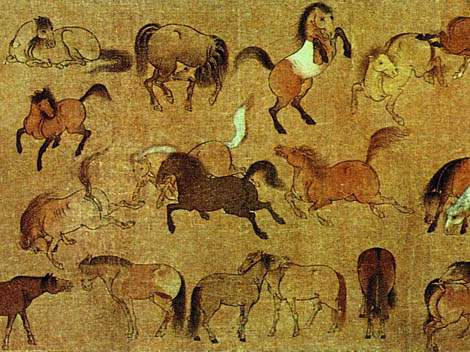
The Jin and Tang Dynasties are the periods when Chinese ink painting grew to its maturity. The styles of paintings include ink painting, frescos, and block painting, of which ink painting best represents the characteristics of Chinese paintings. The themes of ink painting include human figures, landscapes, birds and flowers, insects, fish, beasts, etc.
In the period of the Wei, Jin, Southern and Northern Dynasties, figure painting and beast painting experienced initial maturity. Gui Kaizhi of the Eastern Jin Dynasty was a representative painter of that period. He had left behind masterpieces like "Nvshi Zhen Tu", "Luoshen Fu Tu" and "Lienv Renzhi Tu". The existing works are only copies of the originals done by later generations.

The Sui and Tang Dynasties are the period when Chinese painting flourished. Landscape painting began to emerge as an independent branch and was well on the way to maturity. Styles of splash-ink and thick ink made their debut. Great achievements had been attained in painting of human figures and saddled horses. Painting of flowers, birds, and beasts were also evolved into an independent subject. Coloring and the forms of ink and wash also appeared. Figure painting further developed. The figure painting of the style of the Central Plains, with Yan Liben as a representative, are characterized by concise, smooth and sturdy strokes, serene and elegant coloring, and generalizing power. The human and Buddhist figure painting of the frontier style, with the Buddhist monk Wei Chiyi as its representative, on the other hand, shows rich variations in postures, emits a sense of undulation, with vigorous and curving flow of strokes and thick and bright coloring.
The Tang Dynasty produced a huge number of painters, among whom the most influential painters like Yan Liben, Wu Daozi, Han Gan, Han Huang and Zhang Xuan all left behind masterpieces in the world.
We Recommend:
